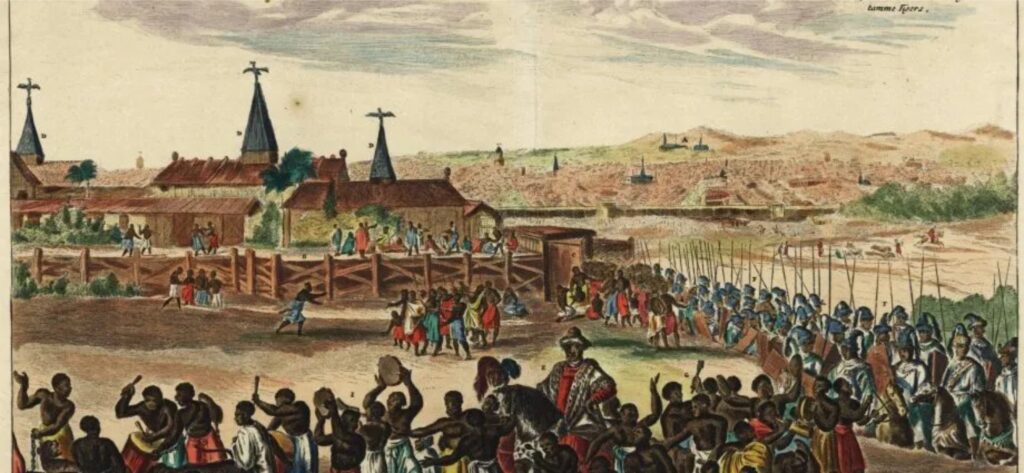Long before Sango was worshipped as the Orisha of thunder and lightning, he ruled as a powerful Alaafin of Oyo. Known for his fearlessness and sharp temper, Sango was no ordinary king. His leadership was marked by justice, warfare, and a deep hunger for spiritual power. His connection to the supernatural was not just belief; it was lived experience.
Legend has it that Sango acquired the power to call down lightning by tampering with mystical forces. Some say he learned chants and incantations that could summon storms. Others believe he discovered secret drums, carved by ancient priests, that harnessed the raw energy of thunder. Every time those drums were played, the skies would split open in response.
A Fall That Shook the Skies
Sango’s reign was not without enemies. As he grew stronger, so did the resistance against him. Betrayed by trusted generals and surrounded by rebellion, the once-mighty king found himself outnumbered. In his final days, he left Oyo and wandered into the forest of Koso, weighed down by defeat.
But Sango’s story did not end in death. The people say he vanished into thin air, taken by the heavens. Not long after, storms began to strike with unnatural fury. Thunder rumbled with a strange rhythm. Villagers whispered that Sango had not died. They believed he had become one with the storm. His spirit had ascended, and from that moment, he was no longer just a king. He was a god.
Legacy of the Thunder God
To this day, Sango is one of the most revered Orishas in Yoruba spirituality. Worshippers call on him for justice, strength, and protection. His symbols include the double axe, the color red, and the Bata drums, all of which reflect his fiery presence. His worship spans beyond Nigeria, reaching Afro-Caribbean religions like Santería in Cuba and Candomblé in Brazil.
Every year, festivals are held in his honor. Drums are beaten in patterns said to mimic thunder. Dancers move like flame and wind. The people remember not just a god, but a ruler whose spirit refused to be buried. Through storm and rhythm, Sango continues to speak. His legend reminds all who listen that power, when guided by courage and purpose, leaves an echo that never fades.
Reference
- Sango: The Thunder Deity in Yoruba Religion https://www.britannica.com/topic/Shango
- The Orisha Sango: Fire and Thunder in Yoruba Mythology https://www.worldhistory.org/Sango/
- Yoruba Religion and Myth: The Rise of Sango https://www.africaresource.com/culture/yoruba-mythology-sango
- Candomblé and the Orisha Tradition in Brazil https://theculturetrip.com/south-america/brazil/articles/guide-to-orixas-of-candomble


